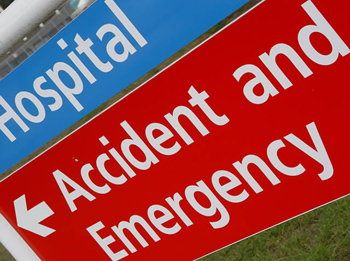January 21, 2008
Here’s A New Year’s Resolution: Fewer Medical Errors

By Michael D. Shaw
Most of us can name at least two areas of endeavor in which errors should be minimized—piloting an airliner, and anything involving medical patient care. But, according to a National Academy of Sciences’ Institute of Medicine (IOM) 1999 report entitled “To Err Is Human: Building a Safer Health System,” the aviation industry is doing a much better job of achieving this goal.
The likelihood of dying per domestic jet flight is estimated to be one in eight million. Statistically, an average passenger would have to fly around the clock for more than 438 years before being involved in a fatal crash. Compare this to two large studies—one conducted in Colorado and Utah and the other in New York—cited in the IOM report.
Colorado/Utah logged adverse hospital events at 2.9% of hospitalizations, with New York a bit higher at 3.7%. In Colorado/Utah, 6.6% of adverse events led to death, while in New York the figure was 13.6%. Both studies noted that over half of these adverse events resulted from medical errors and could have been prevented.
Crunching the numbers from both studies against the 33.6 million admissions to U.S. hospitals in 1997, we can conclude that between 44,000 and 98,000 Americans die each year as the result of medical errors. Even at the lower figure, this would come in ahead of all but the seven leading causes of death: more than motor vehicle accidents, breast cancer, or AIDS. Put another way, that is about 1.3 per THOUSAND, compared to the one in 8 million air travel statistic.
Some observers feel that the sensationalistic news coverage following airline disasters has heightened public concern over aviation safety, and has brought about big improvements in that field.
Five years after the IOM report, The HealthGrades Patient Safety in American Hospitals study looked at the mortality and economic impact of medical errors and injuries that occurred during Medicare hospital admissions nationwide from 2000 to 2002. After evaluating 37 million patient records, HealthGrades determined that an average of 195,000 people in the USA died because of potentially preventable, in-hospital medical errors in each of the years examined. The Medicare cohort represented approximately 45 percent of all hospital admissions (excluding obstetric patients) in the U.S. during those years.
According to Dr. Samantha Collier, HealthGrades’ vice president of medical affairs…
“The HealthGrades study shows that the IOM report may have underestimated the number of deaths due to medical errors, and, moreover, that there is little evidence that patient safety has improved in the last five years. The equivalent of 390 jumbo jets full of people are dying each year due to likely preventable, in-hospital medical errors, making this one of the leading killers in the U.S. If we could focus our efforts on just four key areas—failure to rescue, bed sores, postoperative sepsis, and postoperative pulmonary embolism—and reduce these incidents by just 20 percent, we could save 39,000 people from dying every year.”
So, who is going to lead us out of this mess? Even though the docs may be subordinate these days to the hospital bean-counters and the insurance companies, they still must set the standards for professionalism for the rest of the staff. Saying that, we have to consider the mixed findings coming out of the report “Professionalism in Medicine: Results of a National Survey of Physicians,” published in the December 4, 2007 issue of Annals of Internal Medicine. The investigators sent a two-part professionalism questionnaire to 3,504 physicians in family practice, internal medicine, cardiology, pediatrics, surgery, and anesthesiology, with a 58% response rate. Here are a few highlights:
- 96% agreed that a physician who was impaired or incompetent should be reported to authorities, but 45% said they had failed to do so
- 44% of cardiologists, 57.4% of pediatricians, and 43.2% of family practitioners said they always reported personal knowledge of impaired or incompetent colleagues
- 77% agreed on the desirability of periodic recertification
The investigators commented, “Our findings give reason for both optimism and concern. On the plus side, the near-universal acceptance of key professional norms is reassuring. At the same time, however, our findings suggest opportunities for increasing levels of professional conformance to these norms, at least in the selected areas we probed.”
They also acknowledged that relying on the docs self-reporting “probably resulted in over-reporting of socially desirable activities.” Harold C. Sox, M.D., editor of the journal, remarked that “We can—indeed we must—improve our performance in many of these areas.”
In fairness, physicians are also reluctant to report errors or adverse events because of malpractice suits. About 35% of the doctors surveyed had been involved in such litigation. Most agree that greater legal safeguards would be needed for a mandatory reporting system to succeed. Given the undue influence of the plaintiff’s attorney lobby, reform here will not be easy.
Reporting medical errors is an ethical responsibility. If we want substantive change in our health care system, then we need to approach this matter with candor, resolve, and sufficient resources.

